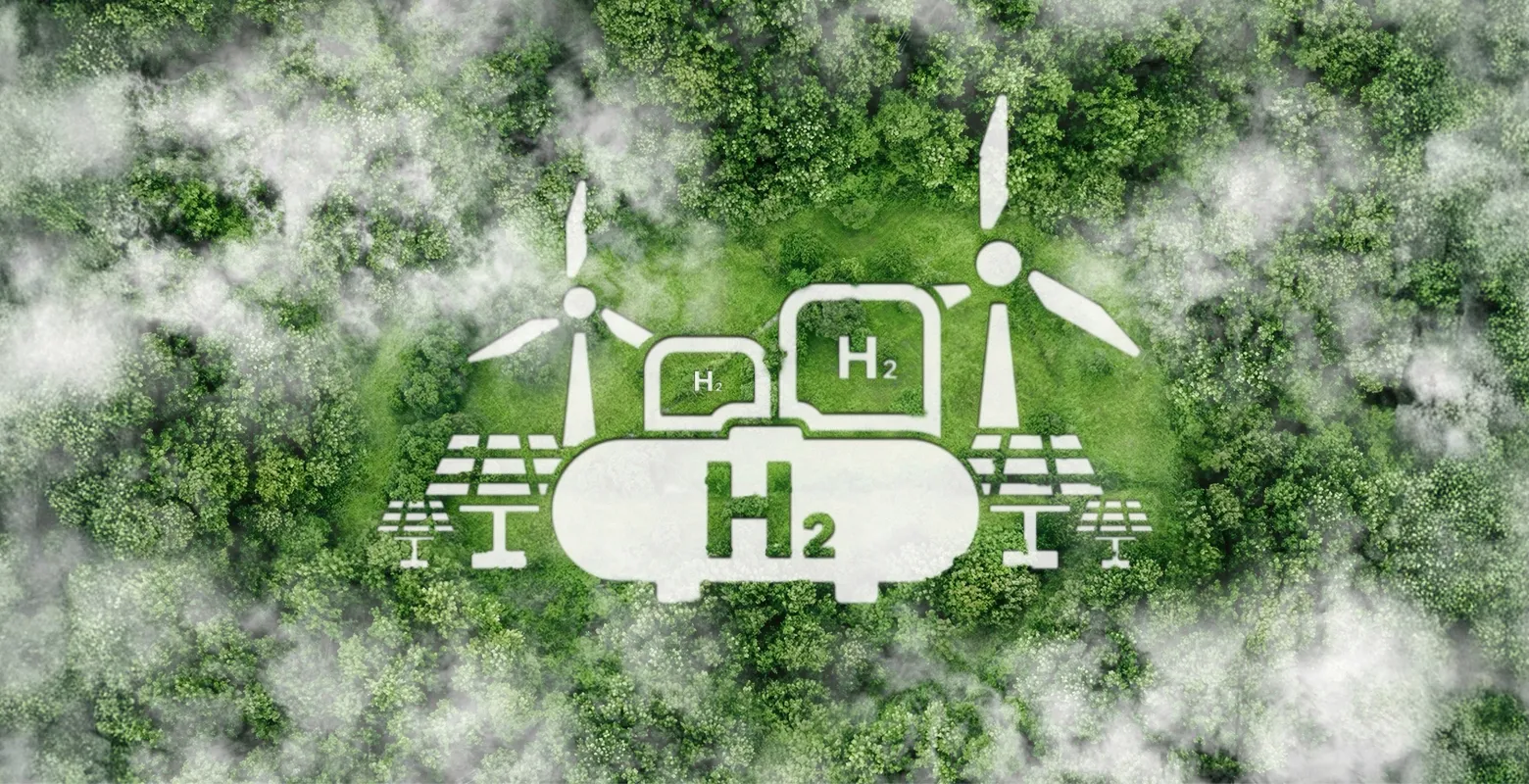

The current global hydrogen demand is predominantly met by gray hydrogen, with approximately
90% of production derived from steam methane reforming (SMR) of natural gas. This process,
known as "Gray Hydrogen” production, results in significant carbon dioxide emissions.
According to information from sources like the IEA and other energy reports, the vast
majority of current hydrogen production comes from fossil fuels.
Green hydrogen, produced through the electrolysis of water powered by renewable energy sources like solar and wind, the electrolysis process splits water (H₂O) into oxygen (O₂) and hydrogen (H₂), known as green oxygen and green hydrogen. It offers a low-carbon alternative.
Production and utilization of green hydrogen emit zero carbon emissions. To eliminate carbon
emissions, the greenhouse effect, and global warming, the utilization of green hydrogen is
necessary.
CO₂ Emission: Producing 1 kg of gray hydrogen via Steam Methane Reforming (SMR)
results in
significant carbon dioxide emissions, ranging from 9 kg CO₂/kg H₂ to 12 kg CO₂/kg H₂.
India's Stand: Now, gray hydrogen consumption by India in 2023 is 5.6 million TPA,
and to
produce this amount of gray hydrogen, it emits 50.4 million TPA CO2 to 67.2 million TPA CO2.
Out of the world's CO2 emissions, only India produced 6.22% of CO2 by 2023 by using gray
hydrogen.
Green hydrogen is considered a game-changer due to its clean production process,
versatility, and potential to decarbonize industries such as transportation, power, and
heavy manufacturing. With India committing to a net-zero target by 2070, the push for green
hydrogen adoption has gained momentum.
Source:
Green hydrogen offers wide applications, from fuel cells for electric vehicles to industrial uses in steelmaking, fertilizers, and chemical industries. It also acts as a storage solution for excess renewable energy, ensuring grid stability.
The global green hydrogen market was valued at $7.98 billion in 2024 and is projected to reach $60.56 billion by 2030, growing at a CAGR of 38.5%. Countries like Germany, Japan, the US, and Australia are leading in green hydrogen investments and infrastructure development.
Source:
As per end-use, hydrogen utilization in India is…
Fertilizer Industries = 48%
Refining Industries = 46%
Other Industries = 6%
India aims to become a global green hydrogen hub, with initiatives such as:
National Green Hydrogen Mission launched in 2023, with an investment of ₹19,744 crore ($2.3
billion). Production target of 5 million metric tons (MMT) by 2030
Export-oriented strategy to position India as a leading green hydrogen supplier
Source:
Advance research and development in the electrolyzer stack to increase efficiency and reduce the electricity consumption of the stack, resulting in a breakdown of green hydrogen production cost.
Electrolysis is currently expensive compared to traditional hydrogen production. Scaling up production and technological improvements will lower costs in the next decade.
Hydrogen needs special pipelines, storage tanks, and transport infrastructure, which is still under development in India.
Hydrogen safety regulations, certification, and storage standards are still evolving. Governments worldwide are working to develop standardized policies for hydrogen deployment.
Green hydrogen is a solution to India’s energy transition and a key driver of
decarbonization. With government support, technological advancements, and industry
investments, India is set to become a global leader in green hydrogen production and
exports.
We, Onix Renewable Limited,
are committed to
developing advanced green
hydrogen and green
fuel production facilities that support the national green hydrogen mission as well as the
commitment to decarbonization.